It’s safe to say that I learned some of my English from the great adventure games from LucasArts and Sierra. In addition, I think these games gave me a huge part of my sense of humor and knowledge of American popular culture.1 There was something magical about the Space Quest series, Indiana Joneses, Maniac Mansions, Monkey Islands and, yes, even Leisure Suit Larries that I’m afraid is lost to that era and can’t be resurrected.
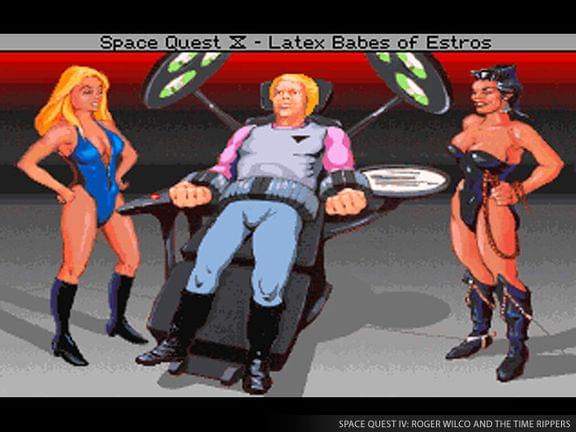
The geniuses behind these games series have, wisely, realised the same and have for most part abandoned the ideas of making a new epic. Instead, for example, one of the hilarious guys behind Day of the Tentacle, Tim Schafer, set up new shop and couple of years ago released an underrated masterpiece 3D platformer, Psychonauts. After that they turned knobs all the way to 11 with an action-adventure game Brütal Legend. So far no traditional adventure game but bringing the adventuring to other genres.
The other great mind behind Day of the Tentacle, Dave Grossman, did something similar when Telltale Games (which also was founded by LucasArts veterans) released the Season One of Sam & Max, the long overdue sequel(s?) to one of the funniest adventure games ever, Sam & Max: Hit the Road.
What Telltale Games did was not release just a game and be done with it, but release a series of games that were only available as digital downloads and scheduled like a TV series. After the release of the first episode on October 2006, they released a new episode about every month until they completed the six-episode season on May 2007. They reused many of the expensive resources involved in adventure games (like graphics, engine and voice) and could keep other costs at minimum partly thanks to the digital nature of the internet and partly thanks to the (almost) guaranteed interest by the hardcore adventure gaming community.
Another LucasArts veteran, Ron Gilbert, had for a long time talked about how episodic gaming would be the future and I have to admit that he might be right. He was supposed to embrace that episodic gaming model with his “strange little episodic RPG-adventure” DeathSpank. Things didn’t exactly turn that way and the DeathSpank series ended up looking more like a traditional sequels. So, three people with three different approaches to games: one traditional AAA-style developer, one indie and one with episodic digital delivery and licensed IP.
It seems to me that Telltale has realized that their relatively short adventure game series are today’s weekend morning cartoons and that this is a perfect medium for once successful IPs2 to make a limited comeback. It’s great that Telltale has been successful with their model and that there is a market for such artisan games they make. Hothead Games and their Precipice of Darkness3 and DeathSpank games and Double Fine with their Costume Quest are in the same bunch. It might tempting to label them as casual, and these games are examples of what the game market needs4. Or maybe I’m just a hopeless fan of anything by Ron Gilbert, Tim Schafer and/or Dave Grossman5.
Sam & Max Save the World (or, Season One)
The point and click adventure games were declared dead for a long time time but over the years the collective nostalgia for golden age of adventure games did finally grew too large to totally ignore and Telltale Games managed to release a new series of LucasArts’s Sam & Max games, another high school favorite.
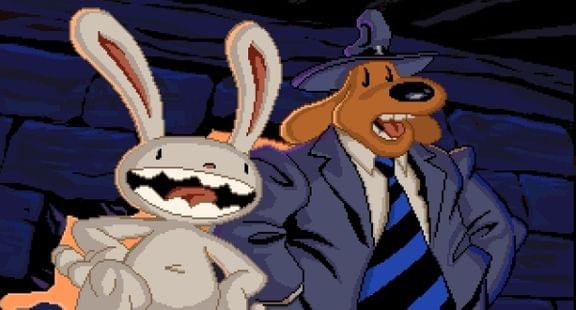
One reason Telltale is among my favourite game companies is because it seems that they really are in touch with their community. Sure, maybe the same thing can be said about any game company you’re a fan of. But these guys brought Sam & Max back to life!6 Telltale’s business has been mostly making adventure games of someone else’s IP. Normally, this would sound like a sure disaster, but the people at Telltale really know their audience. And, in some cases, their source material by having people from the original games on the development team. Another thing that, I think, Telltale did really well was to take care of the community during the production of their games. Between the episodes for Sam & Max they actively published tidbits on their blog and released little short animations or soundtrack pieces on their website.
They also knew how to take care of their customers. The subscribers to the whole season of Sam & Max could get the episodes couple of days earlier than the rest and they also can now get the whole season on a DVD for just the cost of shipping. And for traditionalists, there are reasons to get the physical packages. Not only is DVD filled to the brim with extras but the physical box also contains a file full of little trinkets. I fondly remember the time when many games came with some extra stuff in the box. Sometimes this was part of the game, I seem to remember that solutions to many of the puzzles in the Leisure Suit Larry 3 were hidden in the extra stuff. Today you’re lucky if there’s anything else in the DVD box than the game disc.
With the first season of Sam & Max, Telltale could prove how episodic format combined with digital delivery might save some niche gaming genres, like point-and-click adventure games. The second season improved on how you can sell digital content in a more streamlined way. Another exciting turn during the first season business-wise was when someone somewhere realised that there was nothing stopping Telltale Games publishing Sam & Max on Wii - the only “next-gen” console with a suitable control device for adventure games. The two-button remote is ideal for adventure games (dare I say even better than a mouse?), the Wii itself is ideal for this kind of non-hardcore gaming (like Halo, Counter-Strike or GTA) and does have a channel for digital delivery, the game itself is family friendly (aka Nintendo-friendly) in a non-Manhunt 2 way (unless you start to wonder where Max keeps his gun). Eventually the game was released on both the Wii and Xbox 360.
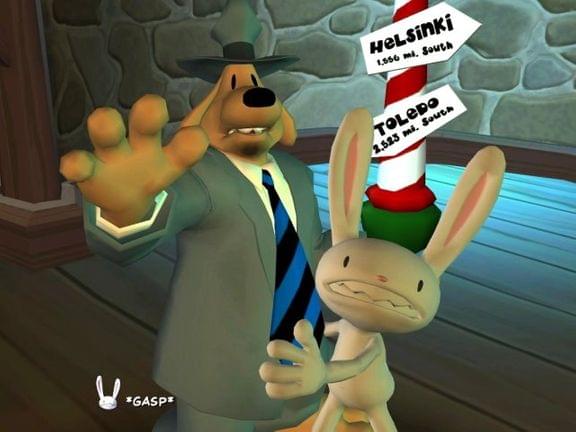
Around the launch of the second season I wasn’t fully sold on the series, so I downloaded the free demo of first episode, Ice Station Santa, of Sam & Max’s second season (also known as Beyond Time And Space). I was really afraid that it might not be enough new content to buy the whole season right away. After playing the demo, I felt confident enough to buy the whole episode, which turned out to be much more funny than the demo had led me to believe. Then again, at $8,95 per episode, that wasn’t that much of money. The upselling part was done nicely, you just need to download the demo, click around the game launcher and you’re ready. This is one of the most slickest e-commerce solutions I’ve so far encountered in a game.
The first game was really funny, and at parts even somewhat difficult. One of the new features in the second season was an in-game help system, which means that you can set the Max the insane rabbit to spurt out hints when you get stuck. Despite some new nifty features, after couple of episodes I could feel the same fatigue from first season setting in. The unplayed episodes started to pile up because I wasn’t anymore completely sold on the rest of the season7.
Tales of Monkey Island
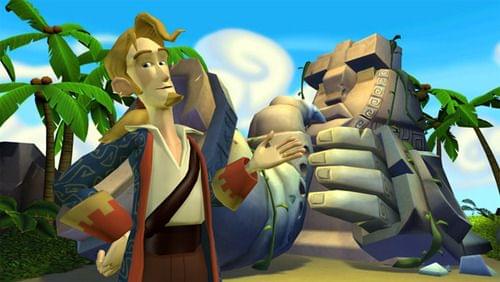
The Monkey Island series has a special place in my heart, right between Sierra’s Space Quest IV and Indiana Jones and the Fate of Atlantis, as the adventure games that really got me hooked. These, and Microprose’s Special Forces, were the reason why I wanted my own computer. Monkey Island 2 is also a game that I left for about 6 months, because I had no idea how to continue - no, this wasn’t the infamous monkey wrench thing that I figured out with random inventory combinations - I just couldn’t find a stick or something. So, I was really excited about Monkey Island 3, and just because that’s the first Monkey Island game that I got to play about the time the game was released, it is the definitive MI game for me.
LucasArts got the head start to revive the series with a remastered edition with updated graphics and voice acting for the first Monkey Island game. Shortly after that Telltale Games pushed out a set of entirely new episodic games featuring a bunch of monkeys and pirates, Tales of Monkey Island. The guys at Telltale had the grace not to reference too much (ie. at all) to a certain Monkey Island game and the story sets off so that everyone can continue pretending there were no Monkey Island games after the third one.
So, the game starts with a bunch of monkeys and LeChuck and then something unexpected happens and Guybrush finds himself as a castaway on yet another island looking for a way to get out. From there on it’s the usual treat of funny dialogue and gathering stuff into inventory. It’s great that the writers had the guts to throw Guybrush to new territories instead of making the series a full and total fan service by revisiting all the familiar characters and speaking skulls. The story has more grown up tone and goes all the way to grim in the finale, which was nice.
The game plays a bit like Telltale’s Sam & Max games, and the game mechanics are quite similar as well. The problem with Telltale’s Sam & Max Season 1–2 were the repetition of scenes and game mechanics (Sybil’s got a new problem, as does Bosco, and you need to solve their problems to get items for your main thing etc.). Tales of Monkey Island sidesteps this issue by throwing Guybrush to new surroundings in each episode and making each episode part of a longer story arc where as in Sam & Max the episodes were quite independent of each other and only the finale tied them together.
There is however on repetitive thing and that is the maps. Sure, each Monkey Island game features maps, but there were at least some variation from game to game and it wasn’t just listening to different animal sounds. Sure, it was a neat puzzle the first time, but after that nothing new was brought to the formula until the second to last episode.
Tales of Monkey Island is a Monkey Island game and it’s a Telltale game. There’s definitely nothing wrong with the first and really nothing wrong with the other either. While the gameplay mechanics are an improvement over Sam & Max Season 2, they do still feel a bit restrictive. I have yet to play S&M season 3, which has totally new control scheme.
There’s one thing to be said about Telltale Games and that’s they really care about their fan base. In real adventure game tradition, gamers have option to get the games on a DVD and get a bunch of stuff that relates to the game series. With Tales of Monkey Island, Telltale didn’t disappoint.
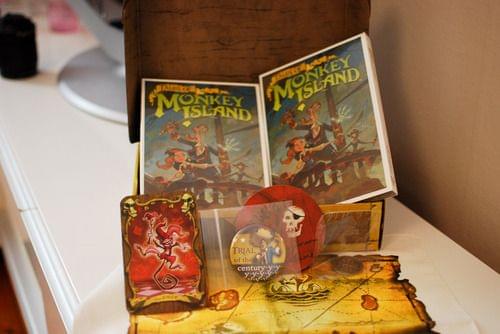
Overall, I was really pleased with the series. The perceived difficulty was somewhat higher than in Sam & Max and for me, this was a real Monkey Island game. However it is always dangerous to revive a beloved game from the dead. One real danger in TMI is that the last episode does leave a couple of things open as to hint for a possible new season. However there also lies a magnificent opportunity, in an Indiana Jones and the Crystal Skull-esque way it might also give a way for Guybrush to retire and let TMI’s version of Shia LaBeouf continue plundering across the Caribbean. Because, seriously, no-one gives a damn about the Secret anymore8 and Guybrush defeating LeChuck gets old after a while. And, after becoming a Pirate God, what is left there? Change of the lead character would actually be a good way to let players to explore Monkey Island in a new way and breath new air into the world.
This post was based on a couple of different posts written between 2007 and 2010 on both my previous blog, Business Analyst Playing Games and the one I collaborated on before that, Tech It Easy. This should explain some of the rips in the time and space continuum within the post.